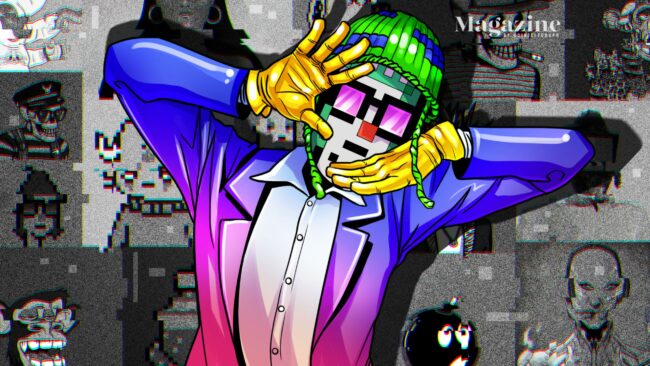“Can someone explain to me why NFT ‘clones’ are selling for so much?” asked Redditor LittleDoofus a couple of months ago.
NFT clones cash in on successful NFT collections by releasing similar or even identical copies of the art under similar sounding brands. LittleDoofus wanted to know how we have suddenly ascribed so much value to NFTs, let alone mere copies of celebrated NFT artworks?
LittleDoofus’ post continued:
“Ok so I kinda understand how someone might see the CryptoPunks or Ether Rocks projects as valuable digital collectibles, but what’s going on with the craze over the clone projects? I see so many lazy CryptoPunks clone projects (no affiliation to Larva Labs) with no-name ‘artists’ behind them selling for a lot.. why? Is it just scammers trying to scam each other?”
It’s a good question: Where do NFT clones fit in open-source crypto culture? I decided to ask long-time crypto developers and the clone creators themselves for their thoughts.
First, by “clones” I’m referring to exact copies of well known projects: Think of CryptoPhunks, which simply flipped the images and literally mirrored the original iconic NFT CryptoPunks series that now sells for millions a piece. CryptoPhunks sell for a little less than an Ether.
Clones also exist across different blockchains. SolPunks, for example, was built on the Solana blockchain and “is in no way affiliated with Larva Labs and/or CryptoPunks” built on Ethereum. But, the punks look the same.
There are also NFT “derivatives” that cash in on the popularity of a well known brand by using a similar “punk” or “ape” name. These clones are copycats, imposters, tributes, spinoffs, or rent seekers, depending on who you ask. CryptoFUNKS took the name and applied it to hand-drawn stick figures for example.
Recreation and remixing also intersect with the open source ethos of crypto. Create stuff, open it up and encourage others to build on your efforts. SushiSwap began as a clone of Uniswap’s code and then forged its own path.
Crypto venture and community builder Daniel Bar points to the current boom in generative art as an example of copying stuff that’s popular.
“It’s a bit like ICOs in 2017, mimicking grows like wildflowers,” he says. “But it does help the industry learn and develop”.
He concedes that clone NFT projects might attract some money that would otherwise go to the original.
“The people who buy the clones could have bought the real ones so, arguably, they may be devalued, say if one less bidder bids,” he says. “But, the real ones have actual perks that the fakes don’t so it’s like buying a fake Rolex.” The Bored Apes Yacht Club (BAYC) included access to exclusive parties. CryptoPunks were used as tickets to a free NFT Meebit drop. That can’t be cloned.
Crypto communities are also complex, ideological and multi-faceted. And while the unique strength of blockchain is authenticating “stuff” to enable trust between partners there is, of course, much speculative spending on digital assets in the current bull market, informed by memes and counter-culture. Valuable clones do make sense in this context.
But, let’s start at the beginning. What the funk/phunk is a nonfungible token, or NFT? This definition frames the whole conversation about the emergence of NFT clones and why people buy them.
Emerging digital property rights
As everyone knows, 2021 is the year of the NFT. Literally, as NFT is Collins Dictionary’s word of the year. Everyone from Canadian ice hockey deity Wayne Gretzky to brands such as Marvel comics have launched their own collections.
The potential collectible angle for original projects is clear, but for clones of a popular NFT series, it’s more uncertain. We do know that clone projects have value and rake in funds, (even if not at the level of their originals). Interestingly, almost nobody is being sold a fake believing it is the real thing.
“Nonfungible” means that the item is unique and can’t be copied. Every NFT is a unique token, and while it’s easy to copy the related image, the creator’s wallet address cannot be faked, and “minting” is a direct line of provenance. “Minting” an NFT registers a particular user as its creator and the first owner of that NFT token.
(As an aside, hackers may be able to clone an NFT known as “sleepminting,” essentially changing the chain of ownership. The developers I spoke with weren’t sure this was actually possible though.)
So, an NFT is basically a form of notary service, a tokenized tool for provenance, establishing and certifying the creator’s wallet address. They can help artists, musicians and others prove they created something.
Michael Kong, CEO of Fantom Foundation, says…
cointelegraph.com
